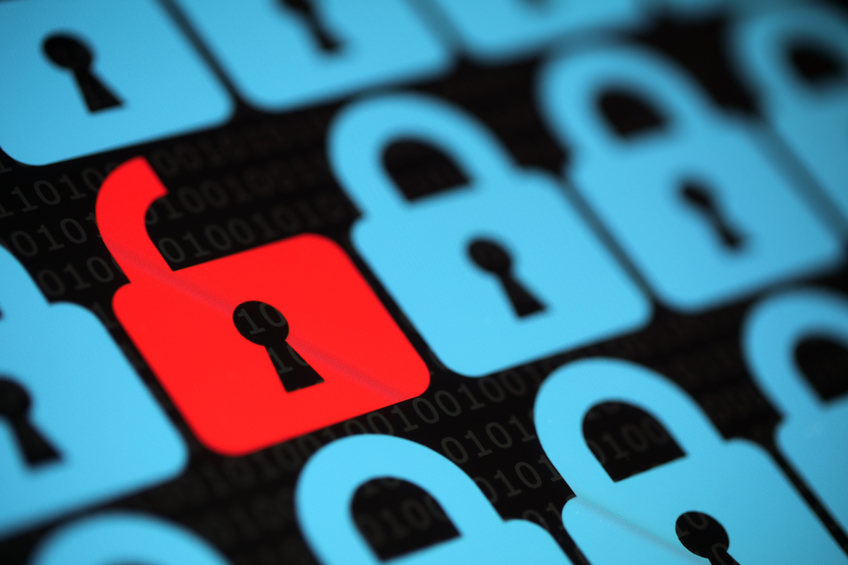
Cybersecurity is important for companies of all sizes, yet many small businesses don’t think they are at risk of cyber attacks because of the size of their company. Unfortunately, that simply isn’t true.
In fact, according to a release by Small Business Committee, 71% of cyber attacks occur at businesses with fewer than 100 employees. Cyber attackers know that small businesses typically have more digital assets than an individual, but less security than a large corporation. This reality puts small businesses in the cyber attackers’ “sweet spot,” putting them at higher than average risk for attack.
If you’re a small business and don’t think you’re at risk for cyber attacks, think again, and start putting a security plan in place now. Need help getting started? Below are four ways small businesses can protect themselves from cyber attacks.
1. Understand Emerging Trends and Evolving Risks
Being prepared for cyber attacks begins with having an understanding of the vulnerabilities that can impact your business. Here are a few of the most common cyber attack methods to be aware of.
-
Hacking – Email and systems hacking are the two most common types of hacking. These occur when cyber criminals gain unauthorized access to your emails or systems and can view and/or manipulate the information within them.
-
Phishing – Phishing is a very common form of cybertheft. This occurs when attackers collect sensitive and personal information, such as passwords and credit card information, through a fraudulent website that appears to be legitimate to the person being targeted. Unsuspecting individuals are often introduced to these websites via email.
-
Social Engineering – With social engineering, attackers use social interactions to build trust with an individual in an effort to gather information about a person, system, or organization.
-
Malware Threats – Malware (short for “malicious software”) is software created by hackers that can be sent to your devices or online platforms in order to get access to your personal information. It cannot damage the physical hardware of your systems and equipment, but it can do a lot of harm to the data and software within them.
-
Keylogging – This type of software tracks all of your keystrokes and can even take screenshots. Keylogging is a particularly concerning form of cyber attack because it can’t always be detected by anti-virus software.
-
Identity Theft – This type of attack occurs when someone obtains your personal information and uses it without your permission to commit fraud.
2. Develop a Security Policy
The best offense is a good defense. To ensure your company is protected from cyber attacks, it is imperative that you define security protocols for every aspect of your business. These protocols should be inherent within your business strategy. As more and more sensitive information is stored digitally, it’s important that your policy cover not only standard practices such as routine security audits and data backup, but that it also addresses newer concerns such as:
-
Social media security
-
Cloud computing
-
The Internet of Things
Additionally, as a part of your security policy, make sure you have an incident response plan in place, so that if something does happen, you and your employees are prepared to respond appropriately. Practice test runs with your employees to make sure everyone understands the plan should an incident arise, and to see if there are any gaps in the procedure.
3. Keep Your Hardware, Software, and Security Safeguards Up-To-Date
Be proactive and always ensure your anti-virus software and other security applications are up to date. Doing so will help to protect your company against new threats and make sure your infrastructure is secure. These precautions should include:
-
Using a Firewall for your internet connection
-
Installing, using, and regularly updating anti-malware, anti-virus, and anti-spyware software on every computer used in your business
-
Downloading and installing software updates as they become available
-
Securing your workplace WiFi networks within the office, and ensuring employees working outside the office are logged in with secure connections
-
Monitoring your systems continuously to detect potential problems
4. Educate Your Employees
Often, employees are unaware of how high-risk their online behavior may be. Train your staff about best practice in cybersecurity and warning signs of cyber attack, as well as procedures to follow if an attack happens.Your IT guy shouldn’t be the only person aware of—or concerned about—cybersecurity threats.
Additionally, if your small business has a bring-your-own-device (BYOD) policy, you need to make sure it includes guidelines for securing employee devices. If your network is secure, but those devices are not—or are connected to an unprotected network outside of your office—then you are still at risk.
Lastly, enforce strict password policies for your employees and all business accounts. When developing passwords, keep the following in mind:
-
Use a unique password for each account
-
Use a mix of letters, numbers, and symbols
-
Don’t include personal information or common words
-
Keep your passwords secure (don’t leave notes to remember your password on your desk or computer)
-
Regularly change passwords
The bottom line is that you cannot equate “small” with “safe.” If you’re a small business and have not started thinking about the consequences that cyber attacks could have on your company, it’s time you start taking it seriously. As the saying goes, it’s better to be safe than sorry.
- How to Use Business Technology to Thrive in the Future of Hybrid Work - October 19, 2021
- The Future of Remote Work and How Collaboration Is Evolving - August 30, 2021
- The Future of Meetings – How Microsoft 365 and Teams are Leading The Way - July 26, 2021



